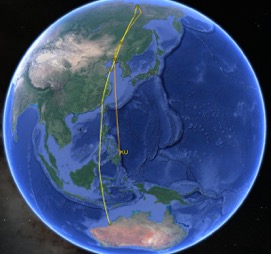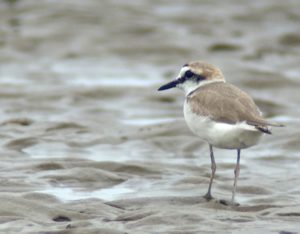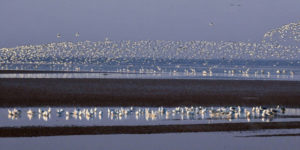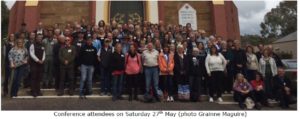Oct 20 2023
Shorebird PhD position
Shorebird PhD position
One PhD position is available within the Conservation Science Research Group to study the movement ecology and habitat use of shorebird communities within the Port Stephens and Hunter estuaries using motus automated telemetry.
The PhD will be supervised by Dr Andrea Griffin and will involve working closely with staff from Hunter Local Land Services, Hunter Bird Observers Club, Department of Planning and Environment, and National Parks and Wildlife. Closing 15 November More
Apr 18 2022
Date set for the Australasian Shorebird Conference
Save the Date 29-30 October 2022

AWSG and QWSG have been frustrated by COVID over the last two years regarding the next scheduled Australasian Shorebird Conference (ASC) which was to have been held in Brisbane in 2019 in conjunction with the East Asian Australasian Flyway Partnership (EAAFP) 11th Meeting of the Partners hosted by the Australian Government. Both face to face meetings have been postponed over the last two years due to COVID and restrictions in travel both domestically and internationally.
We have now resolved to hold a virtual conference so that we don’t have ongoing slippage of this important event in the shorebird calendar, attached is a flyer for the ASC that will be held from 29-30 October and encourage you to save the date. At this stage, we are publicising the conference and would like to have prospective attendees save the dates when it will be held.
Further information about the program, registration arrangements, and call for abstracts will be forthcoming in the near future. We would encourage you to register for Conference when registration is open as we plan to have a great conference and exciting program .
Oct 20 2021
ANSTO 2021 Shorebirds Competition Summary and Results

The ANSTO Education Team was proud to host the fourth annual Shorebirds Competition for primary students in Years 3 to 6. Students across Australia were invited to create an ecotourism poster for a wetland or coastal area that provides an important habitat for shorebirds and other animals. They could highlight a local area or one in their State or Territory. Their poster had to encourage people to want to visit the area, to appreciate and help conserve its natural beauty and the shorebirds that live there.
Entries were received from 55 postcodes across all six States and the Northern Territory (see competition website). Nearly 1200 students across the nation participated. Schools could submit 5 entries per class and 256 entries were received from 29 schools. An additional 64 entries were submitted by individuals, bringing the total number of entries received to 320.
A gallery of the winning entries from the competition can be viewed on the ANSTO website at: https://www.ansto.gov.au/education/primary/competitions/shorebirds-competition-2021/results
Sep 24 2021
The Overwintering Project at SAM

Artist, Kate Gorringe-Smith’s, Overwintering Project will be featured at the South Australian Musum for the first time as part of Adelaide’s Nature Festival 2021. The exhibition opens on Friday 24th September and ends with the Museum’s November Night Lab event on Sunday 14th November.
It is such a wonderful opportunity to have the Overwintering Project Print Portfolio at the SA Museum, as Adelaide is home to Australia’s only International Shorebird Sanctuary. In addition to the Adelaide International Bird Sanctuary National Park – Winaityinaityi Pangkara, South Australia has significant migratory shorebird habitat throughout the State, including six Ramsar sites. The exhibition will provide a great opportunity to focus on the importance of these wetlands and the role they play in our international ecology.
At this stage, Kate is unsure just how many of the prints can be accommodated, but as many as possible will be on display along the main foyer wall and also in the learning space on the 2nd floor, adjacent to the Biodiversity Gallery.
It is a very exciting step for the Overwintering Project Print Portfolio to be exhibited in a state institution, and Kate would like to thank Tim Gilchrist and Maya Penck from the SAM, SA shorebird heroes Maureen Christie and Tony Flaherty, and Julia Wakefield and the other Bittondi members for helping to make this happen!
Works by Julia Wakefield and Joanne Mildenhall, and Mary Pulford’s The Overwintering Project: Six Degrees will also be on exhibition in the Museum during the Nature Festival of South Australia, 24 September – 4 October 2021.



Top left: Julia Wakefield, 2021, Fragile (Nine Days), water-based relief printing on tissue paper, collaged on organza silk with archival glue, Tasmanian Oak, leather, brass screws, steel staples (detail). Top right: Mary Pulford, 2021, The Overwintering Project: Six Degrees, installation of originally printed and posted postcards, size variable. Bottom: Joanne Mildenhall, 2021, The Invisible/Visible Threads of Connection, multi-media, dimensions variable (detail).
Sep 5 2021
Launch of “Coastal High-tide Shorebird Habitat Management Guidelines”
The EAAFP Secretariat, together with the Australasian Wader Studies Group are hosting a webinar “Launch Event: Coastal High-tide Shorebird Habitat Management Guidelines” on 17 September at 4pm – 5pm (KST).
The editors of the guidelines will provide an overview of their content and the collaborative, evidence-based process used to develop the guidelines. A panel of experts, many of whom supported translation of the guidelines, will then discuss local/regional needs and challenges facing high-tide habitat managers in the flyway.

- Title:Launch Event: Coastal High-tide Shorebird Habitat Management Guidelines
- Date: 16:00 – 17:00, 17 September 2021 (Friday, KST)
- Organizers: EAAFP Secretariat, Australasian Wader Studies Group
- Participants: Site managers, local NGOs and experts, EAAF Country partners, EAAFP, Researchers
- Meeting Platform: Zoom
- Registration link: https://bit.ly/3CrFLTx
- Moderator: Richard Fuller, Professor, University of Queensland
Program/Timetable

Speakers and Panelists:
Richard Fuller – Professor, University of Queensland

Micha Jackson – Researcher, University of Adelaide, EAAFP Shorebird Working Group
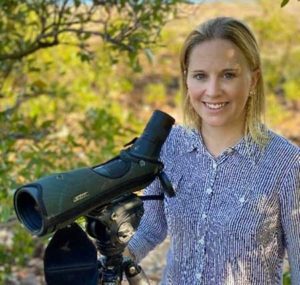
Phil Straw – East Asian Australasian Flyway Liaison Officer, Australasian Wader Studies Group

Thattaya Bidayabha – Executive Director, Bird Conservation Society of Thailand
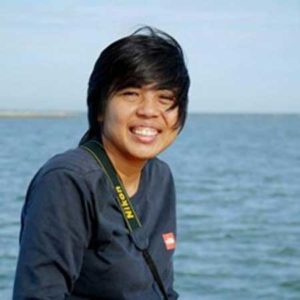
Fion Cheung – Manager, Flyway Planning and Training, WWF-Hong Kong

Yifei Jia – Scientist, EAAFP Science Unit

Yuna Kim – Director, Dr Kim’s Conservation Solutions

Yus Rusila Noor – Acting Director of Yayasan Lahan Basah (YLBA)/Wetlands International Indonesia

Batrisyia Teepol – Vice Chairperson, Malaysian Nature Society Kuching Branch

Trai Le Trong – Deputy Director, Viet Nature Conservation Centre
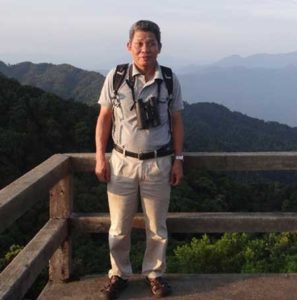
Apr 1 2021
Fourth annual Shorebirds Competition for primary students in Australia goes live
The annual Shorebirds Competition for primary students is being offered nationally again in 2021 with a new theme that features shorebirds in their wetland habitats. This Competition aims to educate young citizens and their families about shorebirds and raise community awareness of the birds and their important habitats across Australia.
The Shorebirds Competition is an annual poster competition started in 2018 and initially focused on Botany Bay, in Sydney. The following year it was expanded to include schools in Greater Sydney and Melbourne. In 2020 the competition was offered nationally for the first time, with students from 85 postcodes across Australia and over 100 classes participating.
Jan 30 2021
Short History of the Ramsar Convention on Wetlands of International Importance.
2021 is the 50th Anniversary of the Ramsar Convention on Wetlands of International Importance.
Is this a cause for celebration?
50 years on, our wetlands face greater threats than ever before despite the efforts by those pioneers dedicated to wetlands conservation in the lead up to the Ramsar Convention and since its ratification, over 60 years in all. It will take a mammoth effort by us all to turn back the tide on the loss and degradation of the world’s wetlands, given today’s political climate where environmental conservation sits at the bottom of the list of priorities of some our wealthiest nations, while our poorest nations depend on water and wetlands for their livelihoods like never before.
We each have a voice whether communicating our concerns to the politicians we vote for or taking actions on the ground as conservationists. This can be working with under resourced state, territory and local governments. An example is shown in the AWSG newsletter Tattler #49 on this website.
Most people are unaware of the history of the lead up to the event in February 1971 when a convention was convened by Dr Luc Hoffmann in 1960 as detailed below.
Jan 30 2021
Good News for the Macquarie Marshes Ramsar site!
Included with commentary from the site manager and landholders.
Film Courtesy Stuart Cohan
In response to the record drought in Australia over 2017-2020 an ‘environmental flow’ has been released to replenish the extraordinary Macquarie Marshes, which had become completely dry in 2019. I decided to venture out to the marshes six weeks ago to make short film about the importance of ‘environmental water’ releases to the Macquarie Marshes because there are many who consider this to be a waste of water. With World wetlands Day nearly upon us (February 2) I thought I would share this in the hope you may find it useful in promoting the conservation of wetlands internationally.
Jan 30 2021
Sydney Wetlands Institute – Society of Wetlands Scientists
Upcoming FREE Webinar:
Role of Ramsar Convention in conserving wetlands
Speaker: Adjunct Prof Max Finlayson
2 February 2021 (World Wetlands Day)
3pm – 4pm
Making the Ramsar Convention and all it covers work for us and our interest in urban wetlands – nothing outrageous, but some ideas to help address the missed opportunities and the challenges we face everyday
Jan 26 2021
11th Meeting of the Partners of the East Asian – Australasian Flyway Partnership (EAAFP)

The 11th Meeting of the Partners (MoP) was originally scheduled for mid-March this year but owing to the COVID 19 pandemic that is still very prominent in most of the world and the closure of Australian borders to international travel, the Australian Government and Secretariat of the EAAFP has resolved to postpone the MoP until March 2022. The date and arrangements for the MoP will continue to be reviewed in light of the COVID pandemic and we will keep AWSG members informed of any relevant information that we receive.
Alison Russell-French OAM
Chair, AWSG and AWSG Partner representative to the EAAFP
Nov 28 2020
FLYWAY YOUTH FORUM
The Australasian Wader Studies Group are proud to support the promotion of:
The first international FLYWAY YOUTH FORUM, Connecting the Flyway Youth Leaders of Tomorrow. https://www.youthengagedinwetlands.com/
See Poster here
Nov 17 2020
On the Wings of a Godwit
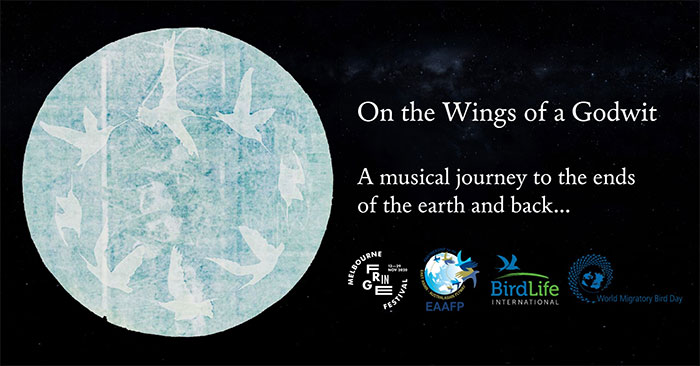
Dear friends,
Don’t miss ‘On the Wings of a Godwit’, available to listen to online as part of the Melbourne Fringe Festival from tomorrow. We produced this initially for World Migratory Bird Day on May 10. Please spread the word by forwarding on this email and sharing the Facebook Event. As always, we will make a donation from ticket sales to BirdLife Australia.
On the Wings of a Godwit
A musical meditation to the ends of the earth and back…
Presented as part of the Melbourne Fringe Festival
Multiple dates and times between November 18-29
Suggested Price: $15, tickets available here
Duration: 20mins
Aug 8 2020
Global Flyway Network in Australia Update
The Global Flyway Network (GFN) was initiated by Theunis Piersma, professor of Global Flyway Ecology at the University of Groningen, in the Netherlands in 2006. This includes work in the NW Australia and China where its team, carries out extensive studies of migratory shorebirds in Northwest Australia as well as the coasts of China. This includes extensive catching and marking migratory shorebirds, notable with engraved coloured ‘leg flags’, which identify induvial birds in the field by any observer in the East Asian Australasian Flyway. Over the years members of the GFN, employed by Chris Hassell, in Broome, NW Australia, have spent many thousands of hours scanning extensive tidal mudflats in North West Australia as well the coasts of China. The resultant database includes flagged shorebirds in any of the Flyway countries that pass through these study areas during migration.
The (GFN) is a partnership between researchers worldwide who are devoted to long term — usually demographic — work on long distance migrating shorebirds. The partnership aims to build on the strengths of comparative demographic shorebird studies worldwide, with the aim to understand and analyse the factors determining shorebird numbers in a rapidly changing world. In practice it also tries to fill major gaps in coverage of fieldwork of the world’s most threatened shorebird flyways.
Aug 4 2020
East Asian-Australasian Flyway Shorebirds Science Meeting via Zoom
RECENT UPDATES ON EAAFSSM
MOVED ONLINE
Full, three-day online Zoom meeting with 80 confirmed talks in two concurrent sessions and various plenary addresses.
The online Zoom meeting will take place 3 – 5 November 2020.
The meeting will be hosted by the National Institute of Ecology in Seocheon-gun, Republic of Korea.
We are very pleased to announce that registration is now open for the 1st East Asian-Australasian Flyway Shorebird Science Meeting, to be held 3-5 November 2020!
Please complete the registration form https://form.jotform.com/200124184545346
Jul 26 2020
Letter to AWSG Members 2020

Letter to AWSG Members
With the new world of COVID 19, the AWSG Committee has been observing the requirements set in place to deal with the virus but has engaged nevertheless with a number of activities in relation to migratory shorebirds. I have outlined these below.
The 2020 – 2022 AWSG Committee
We now have a new AWSG Committee that came into operation on 1 July. I have attached the Committee composition (at Annex A) including some brief information about the members of the Committee. The Committee will continue to meet quarterly but by Zoom in the current world of COVID 19.
Mar 29 2020
Third annual ANSTO schools Shorebirds Competition goes National

Background
ANSTO is one of Australia’s premiere scientific research organisations committed to environmental research to understand the health of ecosystems and community education. In 2018 ANSTO held its first Shorebirds Competition for primary school students in Years 3 to 6.
The competition aimed to raise awareness of the plight of shorebirds in Botany Bay and local habitats that are important for shorebirds and other organisms.
It supported the initiative taken by the Sutherland Shire Council in promoting shorebirds along their recently constructed shared pathway and well needed purpose-built shorebird roosting island in Woolooware Bay, on the southern shore of Botany Bay.
Mar 28 2020
AWSG Satellite Tracking Project Updates 2020 ~ #1
The AWSG Satellite Tracking Projects
Background
The Australasian Wader Studies Group (AWSG) has been using satellite transmitters for tracking the migration of shorebirds visiting North West Australia since November 2013 when five 5g satellite transmitters were deployed on Little Curlew in Roebuck Bay, Broome. In February 2017 satellite trackers were placed on Whimbrel and in February 2019 on Oriental Plover.
Please click here to read or download the report in .pdf format
Mar 28 2020
AWSG North-west Australia Satellite Tracking Project Dec 2019 – Update 21
Number 21 – 27.12.2019
The AWSG Satellite Tracking Projects
Background
The Australasian Wader Studies Group (AWSG) has been using satellite transmitters for tracking the migration of shorebirds visiting North West Australia since November 2013 when five 5g satellite transmitters were deployed on Little Curlew in Roebuck Bay, Broome. In February 2017 satellite trackers were placed on Whimbrel and in February 2019 on Oriental Plover.
Please click here to read or download the report in .pdf format
Dec 15 2019
Phil Straw returns as Editor of Tattler
Over the past 25 years the Tattler has changed in focus from purely a ‘newsletter’ to ‘increase the level of communication between wader enthusiasts, researchers and conservationists’ to include many short research papers and articles from across the East Asian Australasian Flyway (EAAF). This has become an onerous task for the Editor of Tattler, which in turn has taken a lot of material that would have otherwise appeared in the AWSG Journal ‘Stilt’ which recently was reduced from a biannual publication to once a year.
At a recent meeting of the AWSG Committee in November 2019 a decision was made to revert the focus to a ‘newsletter’ format, which in conjunction with the AWSG website will handle the increase in news items from across the EAAF.
A Special Edition of Tattler ‘A Year in Review’ is now available online here and is being be posted to all members of the AWSG. We hope you enjoy reading!
Dec 15 2019
1st East Asian-Australasian Flyway Shorebird Science Meeting– CHANGE OF DATE!
Due to the Covid19 (coronavirus) the date for the First Shorebird Science Meeting scheduled for May 2020 has been changed to November 3-6 2020
The Shorebird Science Meeting will still be held in the East Asian Australasian Flyway which will held at the National Institute of Ecology, Seocheon-gun, Chungcheongnam-do, Republic of Korea.
Details are available on the website link: http://www.eaafssm.com/
Dec 3 2019
Death of a Legend
Dr Clive Dudley Thomas Minton, AM, (7/10/1934 – 6/11/2019)

A reflective Clive Minton in ‘formal’ attire, on the shore of Delaware Bay in 2006 (Chung Yu Chiang photo)
Dr Clive Minton, described as a father figure in global wader studies, was killed in a car crash on 6 November 2019 at Dunkeld in Victoria, Australia. His wife Pat and a family friend were travelling with him at the time and were seriously injured although now in recovery. They were all returning from a short holiday on Kangaroo Island in South Australia.
Oct 2 2019
Doug Watkins selected as Chief Executive of EAAFP
Doug Watkins, Chairman of the Australasian Wader Studies Group, has been selected as the Chief Executive of East Asian-Australasian Flyway Partnership Secretariat.
 Doug Watkins at Jerrabomberra Wetlands, Canberra, Australia.
Doug Watkins at Jerrabomberra Wetlands, Canberra, Australia.
On 28 September 2019, the East Asian Australasian Flyway Partnership (EAAFP) announced that Doug Watkins had been selected and appointed to be the Chief Executive of East Asian-Australasian Flyway Partnership Secretariat.
Doug is well known to many in his native Australia, as well as many of those representing the 37 Partners of the EAAFP, for his long history of involvement with the study and conservation of migratory shorebirds in Australia since the 1980s. Firstly with the Australian Wader Studies Group (ASWG) then on the international scene with Wetlands International.
Jul 30 2019
Tattler Editor Wanted
The appointment of Editor of Tattler is urgently needed to work with a team of dedicated researchers and conservationist across the migratory flyways of the Asia Pacific from the Arctic tundra to Australia and New Zealand!
October 2019 will mark the 25th anniversary of Tattler, newsletter for the Asia Pacific Flyways & Australian Shorebirds 2020 Project
The first edition of the then ‘The Tattler’ was initiated by Phil Straw in October 1994 as a way to disseminate information to wader enthusiasts, researchers and conservationists including all members of the Australasian Wader Studies Group. In 1996 the newsletter played an essential role in promoting the first, and still the biggest, international shorebird conference in Australasia titled ‘Shorebird Conservation in the Asia-Pacific Region’ convened by Phil with the help of the AWSG committee. This event in turn played a role in the initiation of the East Asian Australasian Shorebird Reserve Network at a side meeting of the Ramsar Convention of Parties marking the 25th Anniversary of Ramsar in Brisbane (now known as the EAA Flyway, see
Jul 11 2019
Bohai Bay nomination as a World Heritage Site
Bohai Bay is situated in the largest intertidal wetland system in the world and one of the most biologically diverse and, until now, the most threatened stopover site for migratory shorebirds in the East Asian Australasian Flyway..

img: WHS Yancheng
The World Heritage Committee decided to inscribe the Migratory Bird Sanctuaries along the Coast of the Yellow Sea-Bohai Gulf of China (Phase I) into the World Heritage List, at the 43rd session of the World Heritage Convention. This adds China’s total World Heritage sites to 54, which is the highest number of world heritage sites in the world.

img: Chen Guoyuan
The nomination was supported by the Australian Government and accepted by all representatives.
Jun 28 2019
Discover the Overwintering Project
Brown birds in a brown landscape, migratory shorebird are our most endangered group of birds. Every year they migrate from the shores of Australia and New Zealand to their breeding grounds above the arctic circle in Siberia and Alaska. The remarkable annual circuit that they fly is called the East Asian-Australasian Flyway and it passes through 23 countries.
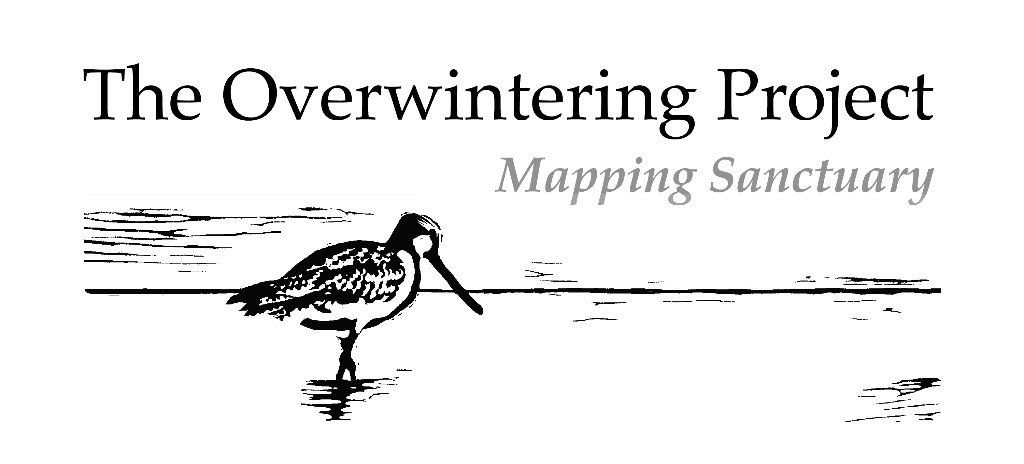
The Overwintering Project: Mapping Sanctuary seeks to raise awareness for our migratory shorebirds and their habitat by inviting artists to help make them visible.
Anyone can join the Overwintering Project. Find out more..
Jun 28 2019
AWSG Members play important roles in the EAAFP
AWSG Members play important roles in the EAAFP including special news updates starting with this issue, as part of our CEPA role.

Adopted in the list of the World Summit on Sustainable Development as a Type II initiative which is informal and voluntary, the Partnership was launched on 6 November 2006 and aims to protect migratory waterbirds, their habitat and the livelihoods of people dependent upon them. There are currently 37 Partners including 18 countries, 6 intergovernmental agencies, 12 international non-governmental organisations (NGOs) and 1 international private enterprise.
Membership is open to governments, international NGOs, inter-governmental organisations and members of the international business sector upon application and agreeing to endorse the text and support the objectives and actions under this Partnership.
The purpose of this Partnership is to provide a flyway-wide framework to promote dialogue, cooperation and collaboration between a range of stakeholders, including all levels of governments, site managers, multilateral environmental agreements, technical institutions, UN agencies, development agencies, industrial and private sector, academe, non-governmental organisations, community groups and local people to conserve migratory waterbirds and their habitats, considering both people and biodiversity of the of the East Asian – Australasian Flyway.
Jun 20 2019
Wader Quest reports on AWSG satellite tagging studies

Wader quest has been publishing reports from researchers working with the ASWG in this critical program for mapping the movements of shorebirds on the EAAF since 2017. The following are links to the research work reports for 2019.
- Introduction
- Update #1
- Update #2
- Update #3
- Update #4
- Update #5
- Update #6
- Update #7
- Update #8
- Update #9
- Update #10
- Update #11
- Update #12
- Update #13
- Update #14
May 11 2019
World Migratory Bird Day 2019
Happy World Migratory Bird Day 2019!
This year’s theme is ‘Be the Solution to Plastic Pollution’. Watch this wonderful video from the East Asian-Australasian Flyway Partnership about how plastics affect migratory birds.
May 10 2019
A Celebration of Lake Wollumboola
Sunday 23rd June, Culburra Beach
BirdLife Shoalhaven invites you to “A Celebration of Lake Wollumboola” to be held on Sunday 23 June from 2pm to 4pm at the Nowra Culburra Surf Life Saving Club, 4 Farrant Avenue, Culburra Beach.
You will be aware of the critical part that Lake Wollumboola plays for the survival of many of our threatened migratory shorebirds and beach nesting birds. But key aspects of the Lake’s significance and ecology are often overlooked. We hope to fill in some of these gaps with a celebration of Lake Wollumboola and the people that have fought for its protection.
As part of her welcome to country, Delia Lowe, Jerrinja Elder, will talk about the significance of the lake for the Jerrinja people over thousands of years.
Kerryn Stephens will lead an interactive session exploring the unique, quirky and unusual aspects of Lake Wollumboola and its inhabitants, occasional visitors and admirers. Kerryn’s involvement with the lake dates back to 1997, when she was part of studies to understand the complexities of the lake hydrology and ecology. Kerryn continued to work with the NSW Office of Environment and Heritage until 2013 undertaking a leading role in development of its Estuary Monitoring, Evaluation and Review Program. After studies in media and communication, she continued her connection with the lake, assisting the Lake Wollumboola Protection Association Inc with the development of its website.
This event gives BirdLife Shoalhaven the opportunity to acknowledge the work of the Association, which has fought tirelessly for the survival of this globally significant site. Frances Bray has been the public face of this often acrimonious fight over more than two decades. Her amazing contribution is now to be recognised by BirdLife Australia with the presentation to her of their prestigious Distinguished Services Award. The event will allow her many friends on the South Coast to celebrate this achievement with her.
After afternoon tea, we hope you will have time to visit the new bird viewing platform on the edge of the lake to observe the birds.
For catering purposes, please contact BirdLife Shoalhaven if you plan to come along.We would appreciate a gold coin donation on entry to go towards the costs of the event.
Contact Brett Davis:
[email protected]
0497868471
Aug 29 2018
Another chapter in the Whimbrel Migration sat tag project
The shorebirds which researchers tagged earlier this year are now departing from their northern breeding grounds. Follow their story in this next instalment of their annual migration.
May 11 2018
Whimbrel Migration Sat Tag Update
At the beginning of this week it was exciting to see all our eight satellite tagged shorebirds from North Western Australia have made it to the northern hemisphere. They are now all at their 1st/2nd stop-over site fuelling up and prepared to made their next leg of the journey. View the pdf..
May 11 2018
2018 Australasian Shorebird Conference
Hobart, Tasmania 27-28 October 2018
Call for Papers and Posters
The 2018 Australasian Shorebird Conference will be held at the University of Tasmania, Sandy Bay campus, in Hobart over the weekend of 27 and 28 October. The campus is just 5 minutes by taxi or 10 minutes by bus from the city centre. A full programme, registration details and accommodation options will be available soon on this site.
These conferences are held every two years and provide an opportunity for everyone interested in hearing about all aspects of shorebird research, conservation and management. As well as for researchers and conservationists to exchange information, discuss relevant issues and develop strategies for improving the status of these remarkable birds.
The theme of the 2018 ASC will be, “Losing their habitats – conservation and management strategies for migratory and resident shorebirds”.
If you wish to present an oral or poster at the ASC, please email the convenor as soon as possible (details below). The Conference will provide a forum for discussions on all shorebird species, and is particularly keen to see contributions from indigenous researchers and managers.
It is planned to arrange a number of post-conference trips (subject to interest) to visit some of the key shorebird (and other birds) spots in Tasmania. The weekend preceding the ASC sees the holding of the 4th Bruny Island Bird Festival on Bruny Island just south of Hobart – a BirdLife KBA with all 12 endemics species on offer.
In conjunction with the ASC, The Overwintering Project will be holding an exhibition of shorebird art at the Moonah Arts Centre, 23-27 Albert Road, Moonah from October 18 – November 10, with the exhibition’s Official Opening to be held on Friday 26 October. It is hoped to hold the ASC welcoming reception/icebreaker at the Centre. Further details to follow.
The Conference convenor is Dr Eric Woehler, Chair of BirdLife Tasmania and AWSG Committee Member. If you would like to be included in all further email announcements, Conference information and post-conference trip details, etc, please send an email to eric.woehler@gmail.com or call him on 0438 204 565.
Nov 11 2017
Whimbrel migration into NW Australia update
People says “Life is like a roller coaster with ups and downs”. This also applies to our Whimbrel satellite tracking project.
Hurray to KU’s return to Australia after its more than 19,800km migration journey of 195 days to and from the breeding ground! KU departed its breeding ground around mid-July, after making 3 stops in Northern China, Sulawesi in Indonesia and Timor-Leste, it arrived Australia Mainland on 29-Oct-17.
View the whole story, download the pdf..

Oct 5 2017
AWSG Satellite Transmitter Project 2017
Reunion on the way home
Last but not least our last Whimbrel KU decided to move south after staying at the Yellow Sea for 50 days! And even more interesting it decided to join KS in South East Sulawesi!
To a surprise, KU joined KS to stop-over at South-east Sulawesi, they are only 60km apart from each other at the moment! It is amazing to see these 2 birds once again utilizing similar stop-over site.
Oct 3 2017
Position Vacancy – Broome Bird Observatory
Sep 28 2017
AWSG Satellite Transmitter Project 2017
STOP THE PRESS!
KU has continued it’s southward migration after a 50 day pit stop in Liaoning Province!
It has flown for 4 days and has just recently covered the west coast of the Philippines.
Sep 28 2017
AWSG Satellite Transmitter Project 2017
Detour Before Home
About 2 weeks ago when we were all expecting KS to be back home to Broome soon, it again
surprised us with another detour.
On 12-Sep, after flying 6 days non-stop from North Korea for nearly 4,900km, KS suddenly made a
north-east turn before heading offshore from South Sulawesi, Indonesia. Within 6 hours, KS again
travelled at its maximum speed of 55km/h for 330km to arrive at a reef area in South East Sulawesi.
Let’s not forget KU, the other successful runner returning from the breeding ground, has stayed at
Yingkou, Liaoning Province for 50 days!
Follow the link through to update 13 of the 2017 AWSG satellite transmitter project to read the latest on the progress of the tagged Whimbrel!
Sep 13 2017
Collaborative conservation in the Republic of Korea
In late May, representatives from BirdLife Australia and BirdLife International hosted Indigenous Yawuru and Murujuga Rangers from Broome and Karratha, academics from Deakin University and representatives of the East Asian–Australasian Flyway Partnership and Woodside Energy, in a visit to South Korea. While there, they witnessed first-hand, the conservation work being conducted to preserve the intertidal mudflats of the Geum Estuary as well as the destruction of muddy shorelines.
The aim of the visit was to complement research and share advice with Seocheon County and the South Korean government on shorebird management in the Geum Estuary, the most important site in South Korea, which supports 90,000 migrating shorebirds, including many displaced from reclaimed areas.
Find out more about the Geum Estuary Project and conservation efforts here.
Sep 11 2017
AWSG Satellite Transmitter Project 2017
Long-haul flight home
One of our Whimbrel from the breeding ground is on its way back home!
KS is currently about 2,500km away from Broome. If it continues to fly without stopping, it is expected to be home within 3 days time.
Meanwhile, KU is spending its 35th day at Yingkou, Liaoning Province. We are expecting it to start migrating south very soon like KS. We are still receiving regular signals from JX and LA from Broome and Eighty Mile Beach.
Follow the link through to update 12 of the 2017 AWSG satellite transmitter project to read the latest on the progress of the tagged Whimbrel!
Aug 27 2017
The East Asian Australasian Flyway Partnership – Position Vacancy for Chief Executive
The East Asian – Australasian Flyway Partnership is seeking a Chief Executive to lead and supervise the work and operations of its international Secretariat, based in Incheon, Republic of Korea.
The Chief Executive leads a six-person Secretariat that supports the East Asian – Australasian Flyway Partnership (EAAFP), a 35-member, informal and voluntary initiative to conserve migratory waterbirds and their habitats in the 22 countries of the Flyway. More information can be found on the EAAFP website at www.eaaflyway.net/position-vacant-chief-executive/.
Aug 27 2017
Hunter Valley Shorebird Workshops
Make sure you attend Birdlife Australia’s Hunter Valley Shorebird Workshops on the 6th and 7th of September to find out all you ever wanted to know bout migratory and beach nesting birds!
For further information and details on how to register, click here.
Aug 21 2017
AWSG Satellite Transmitter Project 2017
Surprising Stop at the Yellow Sea
One of the privileges being a migratory bird might be the freedom to travel among countries without passport or visa. Thus, our Whimbrel KS decided to visit a country which might be a little bit difficult (for humans) to enter – North Korea.
Meanwhile, KU is about 370km north-west of KS, still staying at Yingkou in Liaoning Province, China where it has been for 13 days. We are now anxiously waiting to see when they will both start migrating south again.
Follow the link through to update 11 of the 2017 AWSG satellite transmitter project to read the latest on the progress of the tagged Whimbrel!
Aug 13 2017
AWSG Satellite Transmitter Project 2017
We Have a Winner!
“Well we don’t need to wait until JX’s PTT turns on again….” said Chris Hassell and Kerry Hadley at Wader Beach, Roebuck Bay, Broome: JX is the first Whimbrel back home!
After a return trip to the Philippines spanning 6,124km, JX has returned!
The wait is now on for both KS and KU to return from their arctic adventures!
Follow the link through to update 10 of the 2017 AWSG satellite transmitter project to read the latest on the progress of the tagged Whimbrel!
Aug 13 2017
AWSG Satellite Transmitter Project 2017
Who Will Make it Home First?
All 3 whimbrels that left our shores on migration have begun their southward journeys home.
JX who’s migration journey stopped in the Philippines has begun to fly back to the north-west of Australia with great efficiency.
Meanwhile, the other two frontrunners from the Russian breeding ground have made their first stops in China on their southward journeys.
Follow the link through to update 9 of the 2017 AWSG satellite transmitter project to read the latest on the progress of the tagged Whimbrel!
Aug 3 2017
AWSG Satellite Transmitter Project 2017
On Their Way Back!
Both KS and KU have begun their southward migration from their nesting grounds in Siberia!
KU began the journey one day later than KS but was quickly making ground with GPS tracking data revealing speeds of up to 74km/h!
Follow the link through to update 8 of the 2017 AWSG satellite transmitter project to read the latest on the progress of the tagged Whimbrel!
Jul 20 2017
AWSG Satellite Transmitter Project 2017
The Journey so Far
With nesting underway and the majority of the northern migration complete, what better time to take a look back at what a magnificent journey we’ve witnessed so far…
Inside this update of the AWSG Satellite Transmitter Project 2017, you will find a comprehensive recap of the different migratory paths undertaken so far as well as some fun and interesting stats detailing the journey so far.
Follow the link through to update 7 of the 2017 AWSG satellite transmitter project to read the latest on the progress of the tagged Whimbrel!
Jul 20 2017
A Step in the Right Direction
Building Nanpu Wetland Nature Reserve for a Healthier Ecosystem
A five year memorandum of understanding (MoU) between the Paulson Institute, the World Wide Fund for Nature (WWF), Hebei Provincial Forestry Department and Hebei Luannan County Government has been signed aiming to protect the Nanpu coastal wetland, one of the most important staging habitats for migratory waterbirds along Bohai Bay in China.
Over the past 50 years, China has lost more than 60 percent of its natural coastal wetlands. This agreement, among others, is a step in the right direction towards the protection of these crucial staging and refuelling areas of the East Asian-Australasian Flyway (EAAF) and the multitude of birds that depend on them for their survival.
Please click here to read the full article and learn more about this encouraging development.
Jul 13 2017
News From Kamchatka
“Green” The Great Knot
The Global Flyway Network Great Knots wearing satellite transmitters that were issued in NW Australia, have started their southward migration back to Australia!
Very excitingly, one Great Knot, nick-named “Green” has been photographed by team member Dmitry Dorofeev amongst tens of thousands of shorebirds in Kamchatka and is now heading south through Shchastya Bay.
Follow the link through to Team Piersma’s article: News from Kamchatka, June-July 2017: learn about “Green”.
Embedded within the article is a fantastic short film by Dmitry about a very interesting re-sighting of one of his birds in the Arabian Gulf, check it out!
Jul 10 2017
6th National Beach-nesting Birds Conference – Report
2017 Beach-nesting Birds Conference Review
The 6th National Beach-nesting Birds Conference was held in Willunga on the Fleurieu Peninsula over two days May 26th – 27th, 2017. The conference saw a record attendance of 143 passionate people from South Australia as well as interstate.
The three day conference saw a wide range of presentations and focus groups discussing current and emerging developments and challenges facing the beach-nesting birds themselves as well as the land managers and volunteers that work in tandem to ensure their survival as well as success. The conference culminated in a number of field trips to some of South Australia’s beach-nesting bird regions and was enjoyed by all!
Please follow the link to the 2017 Beach-nesting Bird Conference report to read more on the proceedings and the areas that were discussed.
Jul 10 2017
AWSG Satellite Transmitter Project 2017
Breeding Successful!
In the previous “Updates” we’ve seen KS settled down at its nesting location since the 2nd week. Whimbrel incubation period takes about 4 weeks with both parents sharing the duty.
From the 5th week since the beginning of incubation KS was observed to have travelled up to 40km from the nesting site, a strong indication that it’s young have hatched.
Follow the link through to update 6 of the 2017 AWSG satellite transmitter project to read the latest on the progress of the tagged Whimbrel!
Jun 26 2017
AWSG Satellite Transmitter Project 2017
Breeding Begins!
It has been quite a while since our last updates and we are delighted to see that both KS and KU have reached their breeding sites!
KS and KU have chosen different areas to nest and their nesting areas are approximately 630km apart from each other in the Sakha Republic, Russia.
Follow the link through to update 5 of the 2017 AWSG satellite transmitter project to read the latest on the progress of the tagged Whimbrel!
May 29 2017
AWSG Satellite Transmitter Project 2017
Getting close to breeding grounds!
Over the past week, our two Whimbrels ‘KS’ and ‘KU’ have made significant progress towards their breeding grounds. In one or two weeks’ time we should also hopefully be able to find out where they nest, which is one of the main objectives of this satellite tracking project. Another very interesting question is: Will ‘KS’ and ‘KU’ reunite again at the breeding grounds?
We are also now quite certain that ‘JX‘ will stay in Palawan, the Philippines. Nevertheless, it is still giving us valuable information as north-west Australia leg-flagged Whimbrels have not been resighted in South-East Asia before.
Follow the link through to update 4 of the 2017 AWSG satellite transmitter project to read the latest on the progress of the tagged Whimbrel!
May 29 2017
AWSG Satellite Transmitter Project 2017
Reunion at the Yellow Sea
After nearly a month of northward migration, the satellite recordings of our Whimbrel’s journeys show us that individual birds of the same species, caught and tagged in the same flock in Australia can have vastly different journeys to their breeding grounds, high in the arctic circle.
While two of the three migrating Whimbrel have been observed to be forging ahead through China, one bird, ‘JX‘, has stalled in the Philippines for at least 20 days. It will be very interesting to see if ‘JX‘ finally completes the migration north to the breeding grounds in around a months time.
Follow the link through to update 3 of the 2017 AWSG satellite transmitter project to read the latest on the progress of the tagged Whimbrel!
May 29 2017
AWSG Satellite Transmitter Project 2017
Watch out for migrating Whimbrels!
It is migration time and our satellite-tagged Whimbrels have set off as well! Three of our Whimbrels departed Australia between 16-20 April and they are now in the northern hemisphere.
As three of our tagged Whimbrel make their way up through South-East Asia and into China, it appears one may not have been up to the journey and will be wintering here in Australia until the next migratory season.
Follow the link through to update 2 of the 2017 AWSG satellite transmitter project to read the latest on the progress of the tagged Whimbrel!
May 29 2017
AWSG Satellite Transmitter Project 2017
AWSG Satellite Transmitter Project 2017
AWSG has been experimenting with the use of satellite transmitters for tracking the migration of shorebirds visiting North West Australia since November 2013 when five 5g satellite transmitters were deployed on Little Curlew in Roebuck Bay, Broome. Satellite tracking reveals extremely useful information about the migratory patterns and behaviors of target species.
It was decided to extend the satellite transmitter program to Whimbrel in 2017, with five 5g units being deployed at both 80 Mile Beach (one bird) and at Broome (four birds). In addition, recently released 2g transmitters, developed by Microwave Telemetry Inc. (MTI), were deployed on five Grey-tailed Tattler at 80 Mile Beach. This was carried out during the NWA 2017 Expedition, in February 2017.
Follow the link to read update 1 in a series of updates regarding the satellite tracking of the Whimbrel and Grey-tailed Tattlers as they prepare to depart our shores for their northern breeding grounds.

Mar 12 2017
Call for submissions to the Tattler newsletter
A Call for Submissions to the “Tattler” Newsletter
This is a call to all of our shorebird (wader) network friends to consider providing us with articles of interest to readers of our newsletter Tattler for the East Asian Australasian Flyway as well as our Shorebirds 2020 Project volunteers and Flyway Partnership readers. We look forward to your contributions no matter how small.
We aim to produce the next edition of Tattler in April 2017, when most migratory shorebirds are on migration to their breeding areas. However we would like to include any interesting stories or reports from birdwatchers and researchers who have been studying shorebirds on migration, at their non-breeding sites as well as unusual sightings (including leg flags). The deadline for contributions is 25 March 2017. Please forward your contributions to
Previous issues of the Tattler can be downloaded from our website.
We look forward to hearing from you.
Regards,
Liz Crawford
Editor
[email protected]
Jul 20 2016
Grey Plover Satellite Tracking Project for South Australian Birds
The Grey Plover Satellite Tracking project also includes birds fitted with trackers in South Australia. You can learn more about this important part of the project on the VWSG Grey Plover Tracking page.. It is of interest that the Grey Plovers which are the target of the St Vincent’s Gulf study migrate further than the Western Australian birds, as far as Wrangle Island, north of Siberia.
Jul 20 2016
Australasian Shorebird Conference Earlybird Registration closing July 31, 2016
Pūkorokoro Miranda Naturalists’ Trust is hosting the 10th Australasian Shorebird Conference to be held at UNITEC Institute of Technology in Auckland on 1 – 2 October 2016. Save on registration by getting in before July 31, 2016.
The Conference will consist of two days of presentations covering a wide range of subjects relating to shorebird biology and ecology in New Zealand, Australia and the East Asian-Australasian Flyway.
Anyone interested in presenting a paper or poster at the conference should contact Phil Battley P.Battley@massey.ac.nz
This will be followed by field trips to a variety of good shorebird sites around Auckland on Monday 3 October.
If you are interested in sponsorship please contact Adrian Riegen, the ASC 2016 Committee Convenor at shorebirdconference2016@gmail.com
Keep up-to-date at www.miranda-shorebird.org.nz/asc2016
May 26 2016
Emu Publishes Special Shorebird Edition
The flagship journal of BirdLife Australia, Emu, has released an issue dedicated to migratory shorebirds.
 This edition, Volume 116 Issue 2, has 14 fascinating and informative articles on research which has been conducted on the EAAF and is invaluable for researchers, advocates, educators, conservationist groups and shorebird lovers.
This edition, Volume 116 Issue 2, has 14 fascinating and informative articles on research which has been conducted on the EAAF and is invaluable for researchers, advocates, educators, conservationist groups and shorebird lovers.
Visit the Emu – Austral Ornithology page on the BirdLife Australia site for article summaries or to get your subscription to Emu.
May 26 2016
Proposed development threatens Moreton Bay Ramsar Site
Though much of a proposed development at Toondah Harbour on Moreton Bay will be benign for migratory shorebirds, the development includes additions which will require the reclamation of over 43 hectares, or 1.6%, of the Ramsar Site at this location.
The AWSG, BirdLife Southern Queensland and BirdLife Australia are calling on the government to see that this facet of the development does not proceed. You can assist by visiting the BirdLife Toondah Harbour Development page, learning more and signing the petition.
May 26 2016
Australasian Shorebird Conference 2016
Auckland New Zealand 1-2 October 2016

The coming Australasian Shorebird Conference will be hosted by Pukorokoro Miranda Naturalist’s Trust at the UNITEC Institute of Technology Auckland, NZ.
May 26 2016
Grey Plover Satellite Tracking Project
In seeking to ensure that the best conservation outcomes for migratory shorebirds can be put in place it is necessary to identify and learn about their migratory routes, including breeding and staging locations.

Grey Plover with transmitter attached. Image: Nigel Jackett
In order to learn more, we aim to use satellite tracking to accurately map their journeys. You can learn more about this project and track its progress visiting the Marvel of Migration page on the BirdLife website.


